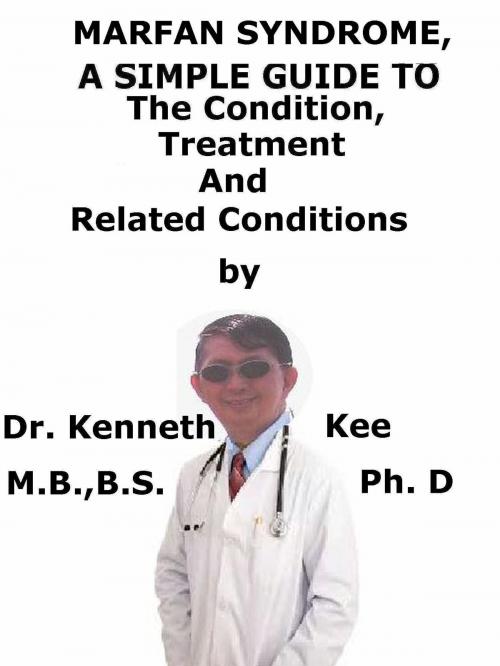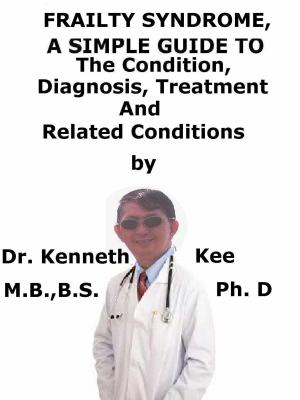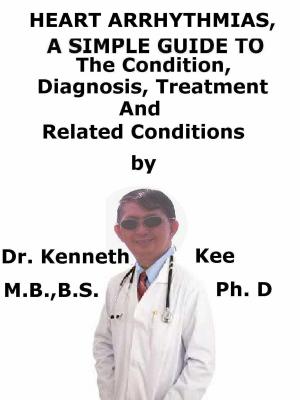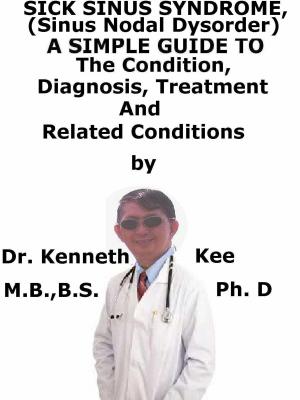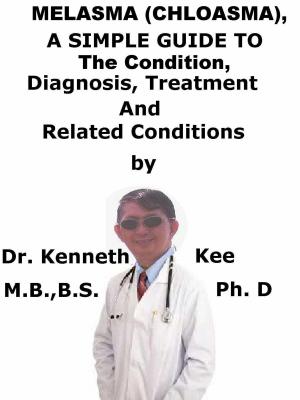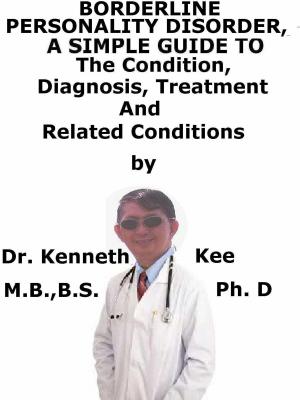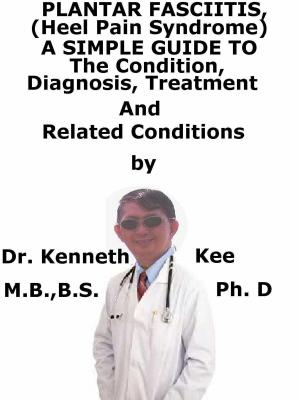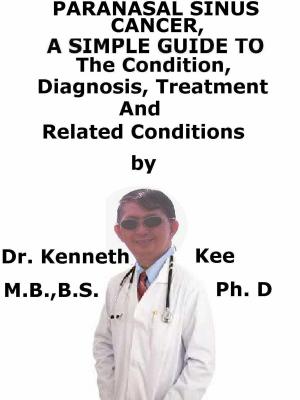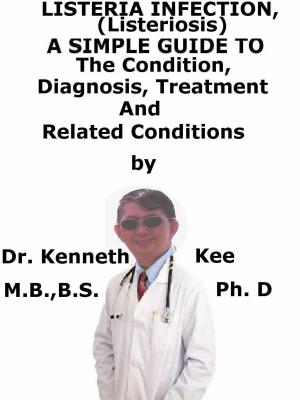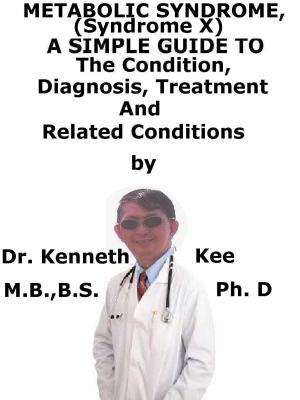Marfan Syndrome, A Simple Guide To The Condition, Treatment And Related Conditions
Nonfiction, Health & Well Being, Health, Ailments & Diseases, Genetic| Author: | Kenneth Kee | ISBN: | 9781370370498 |
| Publisher: | Kenneth Kee | Publication: | April 18, 2017 |
| Imprint: | Smashwords Edition | Language: | English |
| Author: | Kenneth Kee |
| ISBN: | 9781370370498 |
| Publisher: | Kenneth Kee |
| Publication: | April 18, 2017 |
| Imprint: | Smashwords Edition |
| Language: | English |
Marfan's Syndrome is an inherited disorder of the connective tissue involving the collagen and glyccosamino-glycans tissue.
It is characterized by generally weak connective tissue which includes muscles, ligaments and bones.
It is an inherited disease caused by an autosomal dominant gene.
Inheritance is passed to 50 per cent of offspring if one parent is affected and 100 per cent of offspring if both parents are affected.
Marfan’s Syndrome can also be from mutation of the genes.
People with Marfan Syndrome are usually exceptionally tall with long fingers and rather flat feet.
They may have a spinal curve (scoliosis) and be shortsighted
The two heart problems that are most serious are enlargement of the main body artery and leaky heart valves.
When the main body artery stretches (aortic aneurysm) it becomes weaker and blood can leak through the wall (dissection or rupture).
Another heart problem that can occur is leaking of the heart valves.
1. Long slender extremities with arm span exceeding height and long tapered fingers
2. Skeletal deformities include:
a. Kyphoscoliosis
b. Pectus excavatum
c. Long narrow face
d. High arched palate
e. Pronathism
3. Lax ligaments resulting in:
a. Hyperflexiblity of joints
b. Easily strained ligaments and joints
c. Flat feet
4. Eye problems:
a. Dislocation of lens due to lax ligaments
b. Myopia
5. Heart problems:
a. Dilatation of aorta
b. Dilatation of pulmonary artery
Diagnosis of Marfan's Syndrome is often based on:
1. Medical examination of appearance
2. Measurement of metacarpal index from X-rays
Ratio of length to midpoint width is greater than 8.5
3. Urinary hydroxyproline is excessive indicating increased collagen turnover
4. Genetic analysis
Treatment of Marfan's Syndrome includes:
1. Genetic counseling
2. Prevention of joint strains especially spinal joints
3. Beta blockers can reduce aortic blood flow and prevent dilatation of aorta
There may be a shorter life span because of heart and skeletal problems
TABLE OF CONTENT
Introduction
Chapter 1 Marfan Syndrome
Chapter 2 More about Marfan Syndrome
Chapter 3 Treatment of Marfan Syndrome
Chapter 4 Down Syndrome
Chapter 5 Klinefelter Syndrome
Chapter 6 Turner Syndrome
Chapter 7 Huntington’s Chorea
Epilogue
Marfan's Syndrome is an inherited disease
It causes the connective tissue an elasticity defect.
It is usually inherited from autosomal dominant conditions
Marfan Syndrome can also be the result of the gene mutations
It is characterized by generally weak connective tissue with great flexibility
Marfan Syndrome is usually exceptionally tall with long extremities
Marfan Syndrome also may have pectus abnormalities
Marfan Syndrome has a spinal curve called scoliosis
Marfan Syndrome also has eye problems such as eye dislocation
Some have heart problems such as abnormal valve and aortic dissection.
There is no cure in Marfan Syndrome, only prevention with genetic counseling.
Other treatment is dental care, physical exercise and preventive medicines.
-An original poem by Kenneth Kee
Marfan's Syndrome is an inherited disorder of the connective tissue involving the collagen and glyccosamino-glycans tissue.
It is characterized by generally weak connective tissue which includes muscles, ligaments and bones.
It is an inherited disease caused by an autosomal dominant gene.
Inheritance is passed to 50 per cent of offspring if one parent is affected and 100 per cent of offspring if both parents are affected.
Marfan’s Syndrome can also be from mutation of the genes.
People with Marfan Syndrome are usually exceptionally tall with long fingers and rather flat feet.
They may have a spinal curve (scoliosis) and be shortsighted
The two heart problems that are most serious are enlargement of the main body artery and leaky heart valves.
When the main body artery stretches (aortic aneurysm) it becomes weaker and blood can leak through the wall (dissection or rupture).
Another heart problem that can occur is leaking of the heart valves.
1. Long slender extremities with arm span exceeding height and long tapered fingers
2. Skeletal deformities include:
a. Kyphoscoliosis
b. Pectus excavatum
c. Long narrow face
d. High arched palate
e. Pronathism
3. Lax ligaments resulting in:
a. Hyperflexiblity of joints
b. Easily strained ligaments and joints
c. Flat feet
4. Eye problems:
a. Dislocation of lens due to lax ligaments
b. Myopia
5. Heart problems:
a. Dilatation of aorta
b. Dilatation of pulmonary artery
Diagnosis of Marfan's Syndrome is often based on:
1. Medical examination of appearance
2. Measurement of metacarpal index from X-rays
Ratio of length to midpoint width is greater than 8.5
3. Urinary hydroxyproline is excessive indicating increased collagen turnover
4. Genetic analysis
Treatment of Marfan's Syndrome includes:
1. Genetic counseling
2. Prevention of joint strains especially spinal joints
3. Beta blockers can reduce aortic blood flow and prevent dilatation of aorta
There may be a shorter life span because of heart and skeletal problems
TABLE OF CONTENT
Introduction
Chapter 1 Marfan Syndrome
Chapter 2 More about Marfan Syndrome
Chapter 3 Treatment of Marfan Syndrome
Chapter 4 Down Syndrome
Chapter 5 Klinefelter Syndrome
Chapter 6 Turner Syndrome
Chapter 7 Huntington’s Chorea
Epilogue
Marfan's Syndrome is an inherited disease
It causes the connective tissue an elasticity defect.
It is usually inherited from autosomal dominant conditions
Marfan Syndrome can also be the result of the gene mutations
It is characterized by generally weak connective tissue with great flexibility
Marfan Syndrome is usually exceptionally tall with long extremities
Marfan Syndrome also may have pectus abnormalities
Marfan Syndrome has a spinal curve called scoliosis
Marfan Syndrome also has eye problems such as eye dislocation
Some have heart problems such as abnormal valve and aortic dissection.
There is no cure in Marfan Syndrome, only prevention with genetic counseling.
Other treatment is dental care, physical exercise and preventive medicines.
-An original poem by Kenneth Kee
